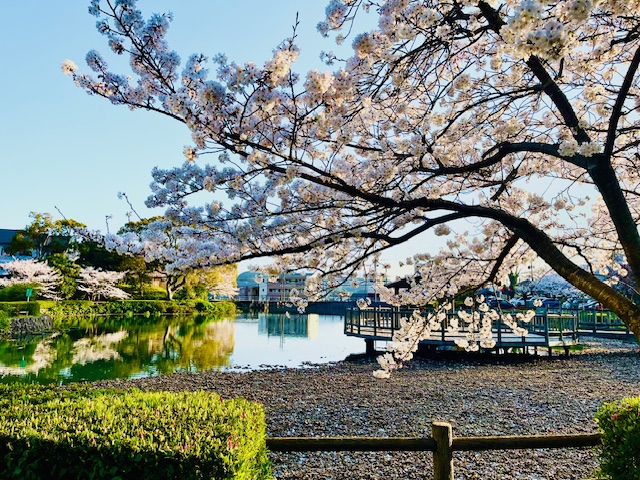There are few things in Japan that are as anticipated every year with such fondness, giddiness, and adoration as the annual display by Mother Nature — in all its glory — of cherry blossoms. Found basically everywhere in Japan, blossoming cherry trees quintessentially represent Japan in a way that few culturally significant traditions can begin to touch.
The actual blossoms are fleeting in their appearance and beauty, so transient that once in full bloom, they last merely for a matter of days. The cherry blossom, or “sakura” in Japanese, has evolved to represent and symbolize not only human life and the renewal of spring after a long winter, but a delicate realization that nothing is permanent and all is in constant change.
Their fragility is a significant part of their beauty. People relish the experience of sitting under the blossoming trees, eating and drinking with friends and colleagues, waiting for a strong breeze to blow, so the petals will begin to cascade down over their heads, carpeting the ground around them. Squeals of joy can be heard when this happens, even though it means the blossoms are almost finished. Everyone takes heart in knowing they will be back, roughly at the same time the next year, showing off their majestic and noble beauty to a new group of admirers.
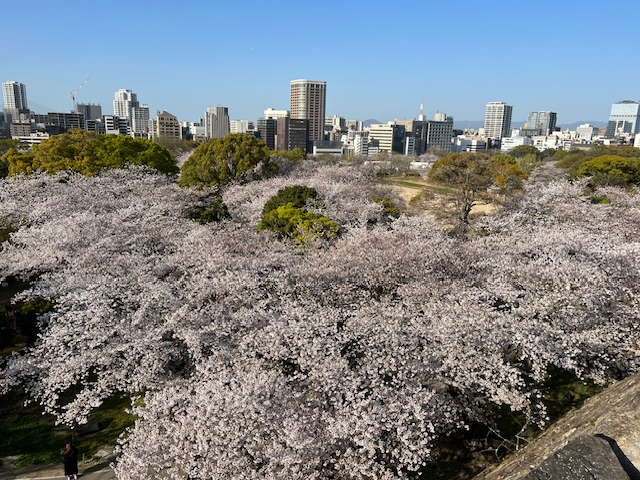
These highly anticipated blossom viewing parties are called “hanami” (literally meaning “flower viewing”) and because the window of opportunity is so finite as to when and how long the blossoms are in bloom, great efforts are made to plan accordingly. The nightly news features blossom viewing segments that show the dates of when the Sakura will be blooming in different parts of Japan. Often is the case where the news graphic slowly turns pink as it moves up the map of the archipelago.
Due to climate change, they seem to be blooming earlier than in the past, so hotels, caterers, offices and just about anyone connected with cherry blossom viewing must plan meticulously to ensure that they time their Hanami perfectly in order to have the best experience at viewing the canopy of flowering trees from below.
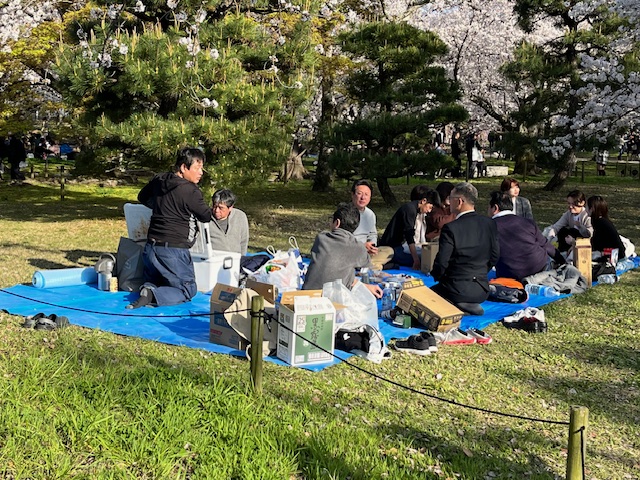
Often times, new recruits in companies are tasked with scouting out the best area at a popular viewing spot in order to save the space for their colleagues who will arrive after work finishes, laden with prepared food and alcoholic drinks to imbibe during the party. Large blue tarps are laid out under trees that offer the best views of the blossoms and the young employee basically holds the spot all day until the others arrive (see photo).
Tourists, both domestic and foreign, have become enamored with this Japanese tradition and visitors try to plan their trips to Japan, or within Japan, during this season in order to experience this once-a-year display of nature. Sadly, however, uncouth behavior regarding the blossoms sometimes occurs.
Overly exuberant visitors will sometimes try to touch or shake the trees to get a photo of the blossoms falling, or will get too close and walk on the roots of the trees, or try to pick the flowers as a souvenir. These actions are all expressly forbidden. The trees ad blossoms are to be admired from afar and not be a tactile experience by touching physically the trees or blossoms.
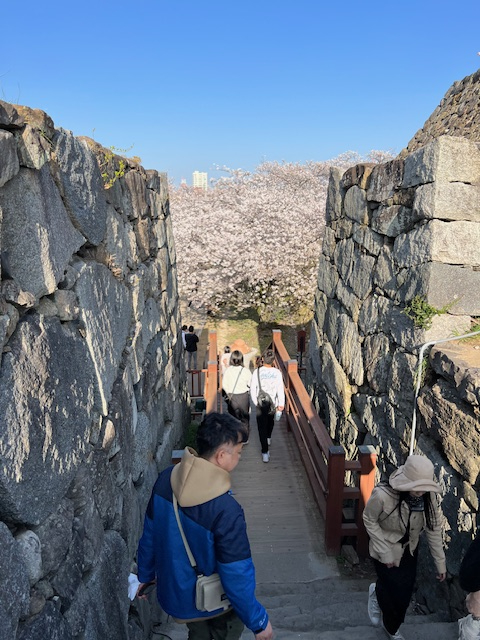
The idea of Hanami dates back to ancient times when aristocrats and the noble class began the tradition of writing poetry and singing songs under the flowering trees. Eventually, the custom spread to other socio-economic classes and today it is a tradition enjoyed by anyone and everyone. These gatherings are made up of people with whom one is associated with; it could be a club event, family reunion, work colleagues, or former classmates. Just about any group of people with common interests or a common connection will make plans to have a Hanami picnic to enjoy this annual display.
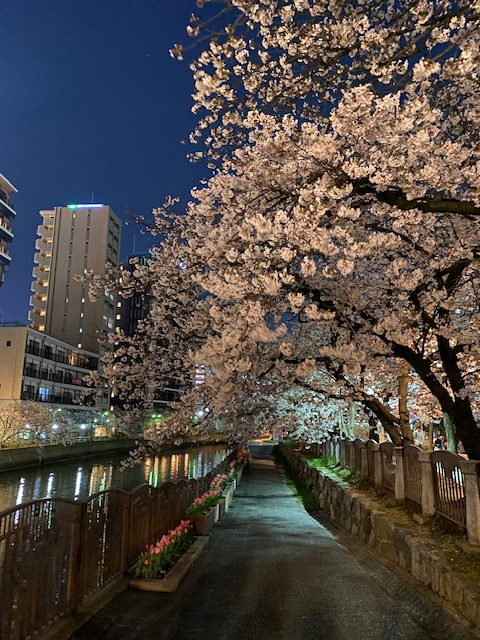
A Hanami can occur anywhere there are flowering cherry trees. Hanami doesn’t always involve eating and drinking. It can simply be a leisurely stroll through a park with many flowering trees. However, the term is largely associated with a picnic-like gathering.
Popular viewing spots can get very crowded with people clamoring to save a spot for their viewing party. People partaking in Hanami parties are expected to clean up the area completely when finished, taking all waste and garbage with them when finished. Also, many parks have rules regarding barbecuing and do not allow it. It is most common for people to have lunch boxes of prepared food to eat and share.
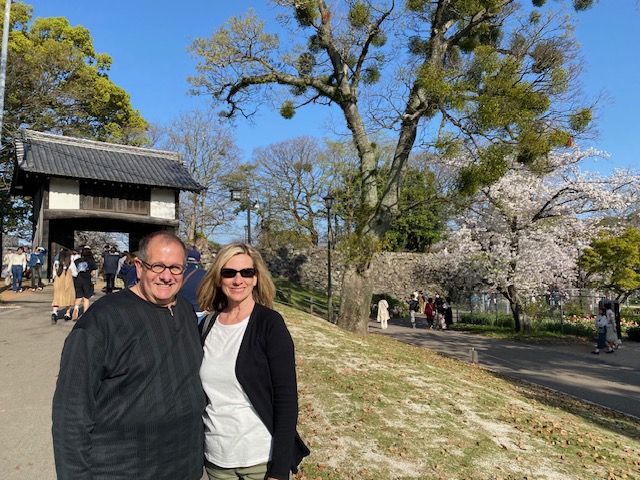
The blossoms are nearly finished where I live now for this year, having blossomed a bit earlier this year. Last year, I had a special treat when a friend from home, a Shelbyville High School classmate came for a visit at the most perfect time to see all the trees blossoming at their most glorious. Dawn Staker Hartman (photo, right) was treated to quite the display of cherry blossoms around the ruins of Fukuoka Castle. We spent an entire day strolling under the canopies of flowers that can be found in the entire grounds of the old castle compound.
The Shelby County Post is a digital newspaper producing news, sports, obituaries and more without a pay wall or subscription needed. Get the most recent Shelby County Post headlines delivered to your email by visiting shelbycountypost.com and click on the free daily email signup link at the top of the page.

